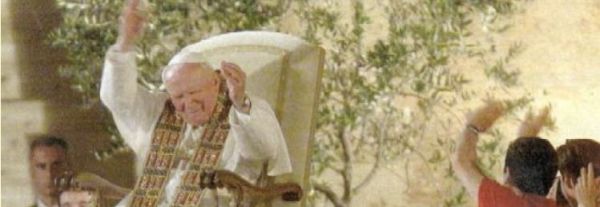4. The aspiration that humanity nurtures, amid countless injustices and sufferings, is the hope of a new civilization marked by freedom and peace. But for such an undertaking, a new generation of builders is needed. Moved not by fear or violence but by the urgency of genuine love, they must learn to build, brick by brick, the city of God within the city of man.
Allow me, dear young people, to consign this hope of mine to you: you must be those "builders"! You are the men and women of tomorrow. The future is in your hearts and in your hands. God is entrusting to you the task, at once difficult and uplifting, of working with him in the building of the civilization of love.
5. From the Letter of John – the youngest of the apostles, and maybe for that very reason the most loved by the Lord – we have listened to these words: "God is light and in him there is no darkness at all" (1 Jn1:5). But, John observes, no one has ever seen God. It is Jesus, the only Son of the Father, who has revealed him to us (cf. Jn 1:18). And if Jesus has revealed God, he has revealed the light. With Christ in fact "the true light that enlightens every man" (Jn 1:9) has come into the world.
Dear young people, let yourselves be taken over by the light of Christ, and spread that light wherever you are. "The light of the countenance of Jesus – says the Catechism of the Catholic Church – illumines the eyes of our heart and teaches us to see everything in the light of his truth and his compassion for all" (No. 2715).
If your friendship with Christ, your knowledge of his mystery, your giving of yourselves to him, are genuine and deep, you will be "children of the light", and you will become "the light of the world". For this reason I repeat to you the Gospel words: "Let your light so shine before others, that they may see your good works and give glory to your Father who is in heaven" (Mt 5:16).
[Pope John Paul II, Vigil at Downsview WYD Toronto 27 July 2002]












